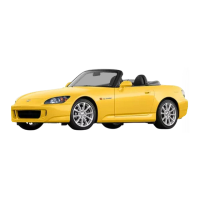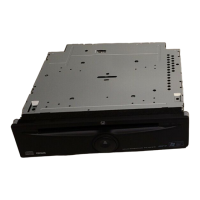This shows the temperature of the
engine’s coolant. During normal
operation, the pointer should rise to
about the middle of the gauge. In
severe driving conditions, the pointer
may rise to the upper zone. If it
reaches the red (hot) mark, pull
safely to the side of the road. Turn to
page for instructions and
precautions on checking the engine’s
cooling system.
If the system still detects a loose or
missing fuel cap, the malfunction
indicator lamp (MIL) comes on.
Turn the engine off, and check or
retighten the fuel cap until it clicks
at least once. The MIL goes out
after several days of normal driving
once the cap is tightened or replaced.
If it does not go out, have your dealer
inspect the vehicle. For more
information, see page .
If your fuel cap is loose or missing, a
‘‘CHECK FUEL CAP’’ message
appears as text in the odometer/trip
meter display after you start the
engine. Turn the engine off and
confirm the fuel cap is installed. If it
is, loosen the cap, then retighten it
until it clicks at least once. When
you restart the engine, the message
appears again. To scroll to another
message, press the select/reset
button.
This shows how much fuel you have.
It may show slightly more or less
than the actual amount. Driving
uphill or making turns can cause the
needle to fluctuate or the low fuel
indicator to come on early. The
needle returns to the bottom after
you turn off the ignition.
210
207
Gauges
Temperature Gauge
Check Fuel Cap Indicator
(odometer/trip meter message)
Fuel Gauge
Instruments and Controls
59
Avoid driving with an extremely low
f uel level. Running out of f uel could
cause the engine to misf ire, damaging
the catalytic converter.
05/09/13 19:48:25 31SCV630 0064

